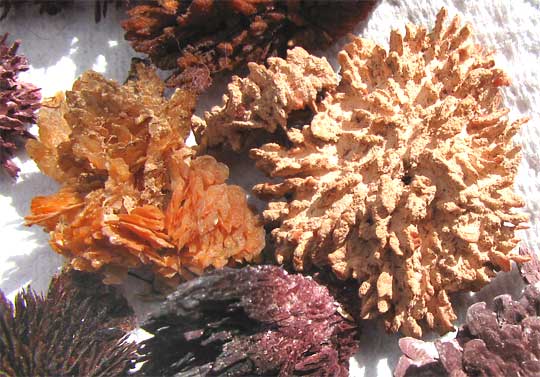Excerpts from Jim Conrad's
Naturalist Newsletter

from the June 27, 2009 Newsletter, issued from the Siskiyou Mountains west of Grants Pass, Oregon:
GRAPE JUICE CRYSTAL-FLOWERS
My friends grow a lot of their own food and preserve much of it. In fact, they've canned so much for so many years that some of it is getting old, "needs to be eaten," and I benefit from that. For example, there are some jars of grape juice so old that sediment has formed in the jar's bottom. Sometimes what's in the jars' bottoms goes beyond mere sediment -- and that's what you see above..
That's an assortment of what we're calling "crystal flowers" found at the bottom of some old jars of canned grape juice. The flowers vary according the variety of grape and how the grapes were processed during juicing. A close-up of some "flowers" is below:

I'm guessing that these are glorified potassium bitartrate crystals, KC4H5O6, the "sediment" that sometimes precipitates in old bottles of wine. Grapes naturally contain fair amounts of both tartaric acid and potassium. When these two things bind together under chilly conditions they form potassium bitartrate crystals which settle to the bottom. The crystals are completely harmless and quite natural, though their crunchiness can be a bit disconcerting when you're not expecting it.
But, really, we don't know that our crystal flowers are potassium bitartrate. If someone out there has a better idea, drop me a line.